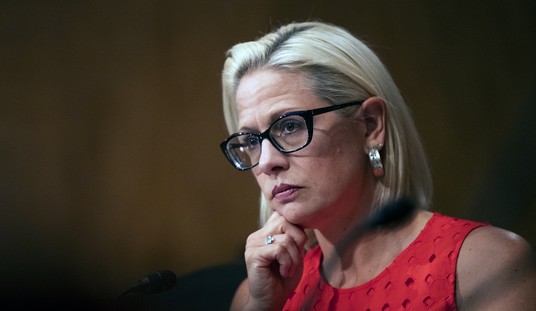Editor's note: This piece was co-authored by Shawn McCoy.
In a scene from the book and film Moneyball, Oakland A’s General Manager Billy Beane meets with his scouts as they prepare for the draft. The scouts, who have spent years studying the game, are convinced they know how a good ball player “looks.” Their experience and knowledge lead them to see the game a specific way, but behavioral economics teaches us that this is also a source of overconfidence in their judgments. Rather than gauging actual performance and contribution to the team, the scouts debated players’ merits based on looks. Billy Beane had to keep reminding them, “We’re not selling jeans here.”
Think politics is any different? It’s not. Studies have shown political experts consistently fail at forecasting future outcomes. In fact, they do worse than random guessing. Our brains jump to conclusions that fit into a narrative of how we see the world. We try to simplify complex situations by viewing them in the context of the past, and an encyclopedic knowledge of recent campaigns leads us to fit candidates of a new cycle into a mold from prior years.
President Obama and his team changed the way campaigns are run. In the evolution of campaigns, their greatest leap forward came from the way they both collected and analyzed data. From voter and donor targeting models to experiment-informed programs to turnout simulations to TV-buying optimization, data-driven decision making was central to their operations. The Obama campaign gave Republicans a glimpse of what the modern campaign should look like. If Republicans are serious about gaining seats in the midterms and taking back the White House, campaign managers and party strategists will need data geeks to guide campaign strategy.
A good campaign manager knows her stuff. She can tell you that Mitt Romney lost Arlington County by 46,795 votes, that OH-06 is inefficiently spread over four media markets, or that a majority of Dubuque voters are Catholic. She hears feedback from field staff, knows that more volunteers are needed in a particular field office, and sees the crosstabs show her candidate doing poorly with women. She juggles her resources, targeting rural voters with a new mailer, going up with 1000 points on debt messaging, and making sure the candidate has time in his schedule for fundraising calls.
Recommended
The campaign manager, however, despite (or perhaps in spite of) all of her experience and careful strategic planning suffers from the vulnerabilities of the biases and untested conventional wisdom she carries with her. A competitor with the right data and model will exploit those biases unless she uses them against her opponent first. Billy Beane and his management team overcame their heuristic biases by turning to statistics to analyze players and strategies. Baseball will never be the same, and in the post-Obama world, politics will never be the same either.
So how can the GOP allow data to guide strategy? The key lies in ensuring that we as a party understand where it comes from and what it is capable of doing. Consistently troubling is that many still link data and digital together as though they are the same thing. They’re as different as fundraising and communications, though an essential step forward will be to fully integrate data and digital into all aspects of the campaign.
Every department of a campaign needs to be part of a continuous feedback loop that updates the campaign’s data and implements new best practices from analyzing that data. Why did the Obama campaign have such good data? It was because they canvassed neighborhoods and collected it. Ample evidence exists that Organizing for America had little influence over policy (as shown in one of your coauthors' academic research), but the real power and success of the organization came from its ability to collect data that was otherwise impossible to obtain and to use campaign-style grassroots lobbying efforts to practice and refine GOTV best practices.
Republican field programs need to have the same objectives in mind. Campaign management needs to establish specific data points for field staff and volunteers to track, and campaigns need to embrace the idea of continual experimentation. The field program should be responsible for implementing these real-world “experiments.” When field staffers speak with voters, the script needs to be varied to determine how different demographic groups respond to varied messaging. This data needs to be tracked, and more importantly, analyzed correctly. Campaigns should also run issue drills in which the campaign will turn out supporters for a specific cause and record not only who showed up, but also what messages turned them out and the contact method that was used, among other things. If campaigns experiment with using IVR, live calls, mail, teletownhalls, email, online ads, and other forms of voter contact, this data can be used to build models that could change the course of the campaign.
Models built using this data can answer virtually any strategic question, and it can allow the campaign to vastly improve its microtargeting. Imagine the power of a model that can tell you each eligible voter’s propensity to register, vote, and support your candidate. Such a model could identify the most likely volunteers and donors. It could also tell you how to reach them; for example, some voters would respond better to a live call from a field staffer while others would rather receive a mailer on economic issues.
The power of data goes far beyond analytics on the voter file. It can be used to determine almost any element of campaign strategy. Where should we place our field offices? What should be our messaging focus? When should the candidate visit a particular town? Nearly anything can be tested, and everything should be tested.
Data can also answer one of the most important questions for every campaign—how much TV should we buy, where, and with what message? TV spending is out of control, and it’s only natural to wonder how it actually impacts the race. Statistical models can answer that. They can tell us whether to buy time in a market that lies almost entirely in another state, whether the standard 1000 points is actually the right number, and whether we may be better off skipping TV in favor of putting more resources into online ads.
As campaigns begin hiring firms to help build these models, they need to know how to spot firms that don’t know what they’re talking about. There will be a lot of Republican consultants adding data mining to their list of services. Those making the decisions on what firms to hire need to understand that building these models is a highly-specialized task. Most of these firms probably won’t know Bayesian inference from frequentist hypothesis testing, or what they’re doing more generally. The party has begun focusing attention on closing the data gap, but even more important is recruiting skilled analysts and statisticians capable of mining the vast stores of information we’re gathering. The tendency of the party is often to turn to Washington insiders to solve problems, but the party finds itself in its current predicament because data isn’t understood inside the Beltway.
Campaigns also need to watch out for firms that know what they’re doing but get a little too fancy. The field of finance has been using analytics to develop investment models for years. No one can explain the challenge here better than Warren Buffett who advises skepticism for models “constructed by a nerdy-sounding priesthood using esoteric terms such as beta, gamma, sigma and the like, these models tend to look impressive. Too often, though, investors forget to examine the assumptions behind the models. Beware of geeks bearing formulas.” We need to make sure our data analysis makes sense in the real world and that understanding of regression and experiments become common knowledge of party strategists.
The role of campaign managers and consultants is going to change quickly. Those prepared to embrace the role of data and work hand-in-hand with data geeks in setting strategy will give their candidates a much higher probability of winning.
























Join the conversation as a VIP Member